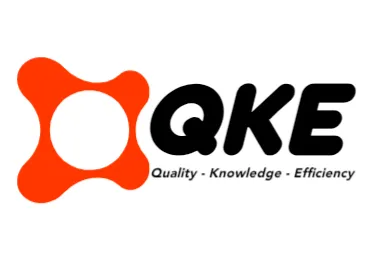Tracking a shipment with MSC involves seven precise steps for effective monitoring. First, gather identifiers like Container Number (e.g., MSCU1234567) or Bill of Lading Number. Next, select a platform such as the MSC website or MyMSC app. Access the tracking tool securely, input accurate shipment details, and initiate tracking. Review real-time updates on position and ETA via GPS and AIS. Utilize additional features like alerts. Explore further to uncover deeper insights into the process.
Key Takeaways
- Gather Container Number or Bill of Lading Number from shipping documents for accurate identification.
- Access the official MSC website or MyMSC app for secure tracking.
- Enter the correct identifier in the “Track a Shipment” section to initiate monitoring.
- Monitor real-time updates, including vessel position and ETA, via interactive maps.
- Set up automated alerts for shipment events or delays using platform features.
Gather Your Shipment Identifiers

How can one ensure accurate tracking of a shipment with MSC? The initial step lies in gathering essential shipment identifiers, which serve as the foundation for precise monitoring. These include the Container Number, Bill of Lading (B/L) Number, and Booking Number, each with distinct Number Formats. Container Numbers follow a standard of four letters and seven digits (e.g., MSCU1234567), while B/L Numbers often feature prefixes like MSCU with 8-12 alphanumeric characters. Booking Numbers, assigned at confirmation, vary in format but are equally critical.
Regarding Identifier Sources, these numbers are typically found on shipping documents such as the Bill of Lading or booking confirmation letters. They may also appear on invoices or be provided by logistics providers. Ensuring access to these identifiers from reliable sources is vital for real-time status updates. Accurate collection of these details guarantees seamless tracking throughout the shipment’s journey with MSC. Additionally, understanding the structure of Container Numbers, which include an owner code and serial number, can help in verifying the authenticity of the identifier owner code structure.
Choose Your Tracking Platform
After securing the necessary shipment identifiers, attention shifts to selecting an appropriate platform for tracking with MSC. This decision hinges on operational needs, technical capacity, and shipment volume. A detailed Platform Comparison reveals distinct options, each with unique strengths. Assessing Vendor Reliability is critical, as consistent data delivery and system uptime are paramount for effective monitoring.
The following table outlines key considerations for three primary platforms:
| Platform Type | Key Features & Suitability |
|---|---|
| Official MSC (myMSC Web/App) | Real-time tracking, documentation; ideal for MSC-only users. |
| Third-Party Aggregators | Multi-carrier tracking, analytics; suits diverse carrier usage. |
| Direct Integration (EDI/API) | Automated data exchange; fits high-volume, tech-savvy shippers. |
Each option varies in complexity and cost, requiring careful evaluation of required features and carrier usage. Selecting the right platform ensures seamless tracking, aligning with specific logistical demands and operational scale.
Access the Tracking Tool
Accessing the MSC tracking tool begins with visiting the official website at msc.com, where users can locate the “Track a Shipment” section directly on the homepage or through main navigation for immediate container and vessel monitoring. Alternatively, registered users can utilize the myMSC portal, a secure eBusiness platform accessible via the website, to manage and track shipments with detailed real-time data. For added convenience, the myMSC mobile app, available on iOS and Android, provides 24/7 access to tracking features on the go.
Choose Official Website
Navigating to the official MSC website at msc.com provides users with direct access to the primary tracking tool for shipment visibility. Ensuring Website Security is critical; users must confirm the correct domain through Domain Verification to avoid fraudulent sites. The tracking feature, often labeled “Track & Trace,” is prominently positioned on the homepage, accessible via a direct URL like msc.com/track-a-shipment.
Below is a concise overview of key identifiers for tracking:
| Identifier Type | Example Format | Purpose |
|---|---|---|
| Container Number | MSCU1234567 | Tracks specific container |
| Bill of Lading (B/L) | MEDU1234567 | Tracks shipment document |
| Booking Number | BK123456789 | Tracks initial reservation |
This ensures precise access to the official platform for monitoring shipments globally with a user-friendly interface.
Use Mymsc Portal
Users who have confirmed access to the official MSC website can further enhance their shipment monitoring by utilizing the MyMSC Portal, a secure eBusiness platform tailored for MSC customers. This portal offers 24/7 real-time access to freight information, enabling precise tracking of shipments via Bill of Lading, booking, or container numbers. With robust Portal Security measures, it ensures data protection while providing visibility into container status, vessel schedules, and estimated arrival times.
For optimal use, effective Account Management is essential, requiring registration and login to unlock full features. Beyond tracking, users can manage bookings, submit shipping instructions, and access documentation. MyMSC centralizes shipping tasks, improving transparency and planning with real-time updates, all within a secure, integrated digital environment.
Download Mobile App
The myMSC mobile app, an official e-business solution for cargo management by MSC, offers a powerful tool for shipment tracking and oversight directly from smartphones or tablets. Available on iOS and Android platforms, it ensures 24/7 access to real-time shipment updates and e-business functionalities like booking management and vessel schedules. The App Requirements include compatible devices running supported OS versions and a user login for full access to tracking features using container or booking numbers.
Designed with robust Security Features, the app safeguards sensitive cargo data through encrypted connections and secure authentication protocols. Regular updates, with the latest in April 2025, ensure optimal performance. Users can download it from the Apple App Store or Google Play Store for seamless cargo monitoring.
Input Your Shipment Details
How does one begin the process of tracking a shipment with MSC? The initial step involves inputting shipment details into the MSC tracking system. Users must obtain one of three primary identifiers—Container Number, Bill of Lading (B/L) Number, or Booking Number—from shipping documents or booking confirmations. Each identifier serves a specific purpose and requires precise entry to avoid Entry Errors. Adhering to the Format Guide, such as ensuring the Container Number includes 4 letters and 7 digits (e.g., MSCU1234567), is critical for accurate results.
Below is a concise overview of these identifiers:
| Identifier Type | Format Example | Purpose |
|---|---|---|
| Container Number | MSCU1234567 | Tracks individual container |
| Bill of Lading Number | MEDUTN123456 | Tracks shipment document |
| Booking Number | BK123456789 | Tracks multiple containers |
These details, entered on the MSC website or app, provide access to vital shipment information with precision.
Initiate the Tracking Process
Navigating the initiation of the MSC tracking process begins with locating the appropriate platform for monitoring shipments. Users should access the official MSC website (msc.com) and navigate to the dedicated “Track a Shipment” section, ensuring a secure connection for data accuracy. Alternatively, third-party tools like SeaVantage or GoComet, often requiring free registration, provide integrated tracking for MSC shipments with user-friendly interfaces.
Next, obtaining the correct tracking identifier—Container Number (e.g., MEDU prefix), Bill of Lading (e.g., MSCU prefix), or Booking Number—is critical. Users must verify the format from shipping documents provided by the shipper. Leveraging Automation Strategies, platforms streamline data entry to enhance efficiency, while Error Prevention mechanisms, such as format validation, minimize input mistakes. Preparing this information beforehand ensures a seamless start. Whether using the MyMSC App or a third-party portal, having verified details ready is essential for initiating the tracking process effectively.
Review Real-Time Updates
Under the subtopic of “Review Real-Time Updates” within MSC Track and Trace, users can check the current location of containers using real-time data from GPS and AIS technologies, ensuring precise positional accuracy. They can also view shipment milestones, tracking key journey points like loading and port calls through interactive maps and detailed voyage histories. Additionally, monitoring arrival estimates is facilitated by accessing updated ETAs via the official website or integrated platforms, providing critical timing information for logistical planning.
Check Current Location
Where can one access the most current information on a container’s journey with MSC? The MSC tracking service offers real-time updates on container locations using advanced GPS and AIS technologies. Accessible through the MSC website, myMSC platform, or mobile app, users can retrieve precise data with identifiers like Container Number or Bill of Lading Number. Third-party platforms also integrate this data for seamless tracking.
Key steps to check the current location include:
- Log in to the MSC website or myMSC app for direct access.
- Enter the Container Number or B/L Number for specific tracking.
- View the container’s real-time position on interactive maps.
- Analyze additional data like vessel speed or route for logistics planning.
This ensures transparency and supports efficient decision-making.
View Shipment Milestones
Tracking shipment milestones with MSC provides users with a comprehensive view of a container’s journey through critical stages. The system meticulously records key events such as Booking Confirmation, Gate In Full, Vessel Departure, Transshipment Events, and Discharge at the Port of Destination. Accessible via the myMSC eBusiness platform, real-time updates ensure precise monitoring of container status using technologies like AIS and smart container data transmission.
Historical Milestones offer a detailed log of past events, enabling users to review the complete journey. Milestone Analytics further enhances tracking by providing insights into patterns and performance metrics. With 24/7 access through web or app, and options for API/EDI integration, MSC ensures users stay informed with accurate, up-to-date shipment information.
Monitor Arrival Estimates
Precision in shipment monitoring is paramount, and MSC’s tracking system delivers real-time Estimated Time of Arrival (ETA) data to ensure users remain informed about container progress. Leveraging GPS and AIS technology, the system provides accurate updates via the MSC website, myMSC app, or integrated third-party platforms, enhancing forecast reliability.
Key aspects of monitoring arrival estimates include:
- Real-Time Updates: Access current ETA and location data across shipping stages.
- Accuracy Factors: ETA precision may vary due to weather or port congestion, requiring delay analysis.
- Reliability Metrics: Certain platforms offer ETA reliability scores based on historical route performance.
- Automated Alerts: Notifications for ETA changes or delays ensure timely responses.
This technical framework supports meticulous tracking and proactive shipment management.
Utilize Additional Features

Beyond basic tracking, the myMSC platform offers users a comprehensive suite of additional features designed to enhance freight management efficiency. Users can access and download shipping documents electronically, streamlining workflows by going paperless. The platform provides detailed vessel schedules, port information, and customs clearance status updates, ensuring precise oversight. For reefer containers, temperature monitoring data may be available, safeguarding cargo integrity.
Additionally, myMSC supports advanced functionalities like Alert Setup, enabling custom notifications for key events such as port arrivals or delays via email or SMS. API Integration allows seamless connection of tracking data to internal systems like ERP or CRM, optimizing operational workflows. Users can also view exchange rates for accurate quoting and access historical data or invoices. With integration of third-party bookings and cloud infrastructure like Microsoft Azure, myMSC ensures robust performance and scalability, complemented by dedicated customer support for platform-related queries or issues.

 Tiếng Việt
Tiếng Việt 日本語
日本語 中文 (中国)
中文 (中国) 한국어
한국어
